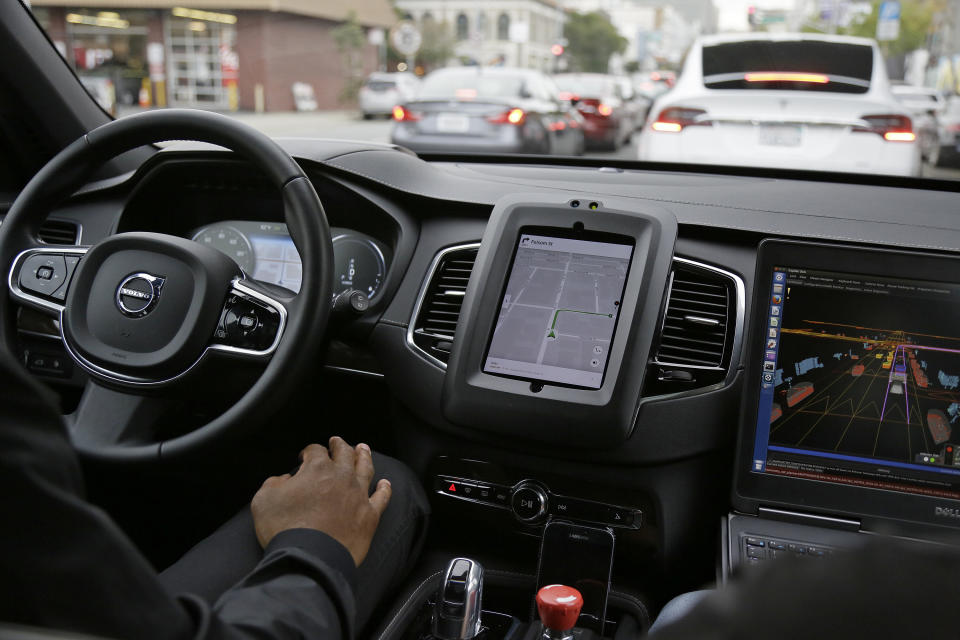Self-driving cars are still super safe, even with the Uber death
Roughly 1,200 pedestrians have been killed by people-driven cars so far this year. Have you heard about most of those incidents? Almost certainly not. We know that cars run into people. It’s sad. But it’s not news.
You probably have heard, however, about a woman killed by a self-driving Uber vehicle in Tempe, Arizona on March 19, as she was crossing a street with her bicycle. This is news, because it’s the first known instance of an autonomous vehicle killing a pedestrian. The technologists tell us this isn’t supposed to happen. Scary.
There’s been at least one other controversial death involving a self-driving car. In 2016, a Tesla Model S owner in Florida died when his car, set to “autopilot” mode, slammed into a tractor-trailer at 74 miles per hour. The technology failed in that crash, and Tesla made changes. The driver, who was probably asleep or incapacitated, also failed, because he did nothing to intervene as an obvious emergency materialized, as Tesla’s system at the time supposedly required.
In the Uber death, something obviously went wrong, as well. Safety investigators will eventually determine what. There was a safety operator in the Volvo SUV who was supposed to take control of the car if the technology failed. That person may not have had time to react, or may have erred in some way.
The Tempe crash will probably amplify fears of self-driving cars, especially since consumers are already skittish about the technology. Earlier this year, Transportation Secretary Elaine Chao told Yahoo Finance that consumer acceptance is the “greatest constraint to growth” in autonomous technology. In a January poll, 64% of respondents said they are “concerned” about sharing the road with self-driving cars.
That logic is backwards, because it’s people, not computers, who are the more dangerous drivers. People-driven cars caused 40,100 deaths last year, and nearly 4.6 million serious injuries. In 2016, the last year for which there’s data, cars piloted by people killed 5,987 pedestrians. That’s 16 per day.
Human error—speeding, drinking, drugging, texting, running red lights—causes more than 90% of all auto fatalities every year. We do stupid things computers would never do, because the illusion of control often makes us think we’re safer than we actually are. Also, some of us are just, well, really stupid behind the wheel.

I’ve ridden in several types of self-driving cars developed by Cadillac, Nissan, Ford and other automakers. The technology available to the public at this point is limited. The best systems can keep the car in a lane on select highways, while speeding up and slowing down based on the speed of surrounding traffic. Lesser systems automatically apply the brakes if a car ahead is within smash range, and flash a warning signal if you’re drifting into the path of a car in an adjacent lane. All the systems available now require the driver to pay attention and take control of the car if something goes wrong. A fully chauferrized robotmobile that whisks you around while you nap, work or browse the web is still many years away.
Just about every serious auto-safety expert thinks autonomous technology will make the roads safer. Sensors and computers are getting very good at assessing everything going on in a car’s vicinity, faster and more accurately than a human can. There are still holes in the technology, usually involving unpredictable situations such as construction, bad weather, police activity, unexpected obstacles or all of those things at once. That’s why most of this is still in the testing phase.
The safety parameters, however, tend to be so conservative they can drive you crazy as a driver (or passenger). Example: When a self-driving test car approaches an intersection with four-way stop signs, it tends to defer to all the other cars, letting them go first. You might be in a bit more of a hurry if you were controlling the car yourself. Once I was in a self-driver that sensed a pedestrian approaching and guessed she’d cross the road—while she was still several paces the pavement. I would have scooted on and not even thought about it. But the self-driver waited, and waited … and finally the pedestrian made it to the street and crossed, allowing us to move ahead after an interminable wait.
In the automotive world, self-driving enthusiasts have been bracing for a fatality that scares the public and dims the allure of the technology. We now have it. The death of the woman in Tempe is a tragedy, but there will be 16 more of these tragedies by this time tomorrow. And many thousands more by the time autonomous systems are mature enough to field in earnest. You never hear about the ones who don’t die, because technology got better and safety improved. But they’re out there already, because of airbags, anti-rollover systems, anti-lock brakes and many other safety advances. We need more of those silent beneficiaries of technology.
Confidential tip line: [email protected]. Encrypted communication available.
Read more:
Rick Newman is the author of four books, including Rebounders: How Winners Pivot from Setback to Success. Follow him on Twitter: @rickjnewman
Follow Yahoo Finance on Facebook, Twitter, Instagram, and LinkedIn
